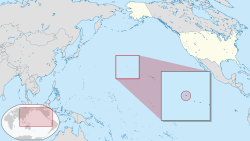Midway Islands
The Midway Islands or Midway Atoll is a wildlife refuge in the north Pacific Ocean, roughly "midway" between the USA and East Asia, just east of the International Date Line. It was made famous by an Oscar-winning color documentary in 1942, and a 1976 feature film, both about the battle which marked a turning point in World War II.
Understand
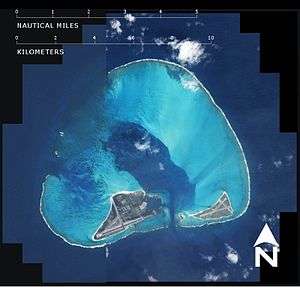
History
The U.S. took formal possession of the islands in 1867. In 1903 President Teddy Roosevelt declared the islands a seabird conservation area. Later in 1903 the laying of a trans-Pacific telegraph cable, which passed through the islands, brought the first residents. Between 1935 and 1947, Midway was used as a refueling stop for trans-Pacific flights, and a hotel was built to house passengers.
A naval base was constructed shortly before the U.S. entered World War II (see Pacific War), and the victory over a Japanese fleet off Midway in 1942 was one of the war's turning points. Although the islands and surrounding waters were designated a National Wildlife Refuge in 1988, they continued to serve as a naval facility until 1993. The atoll was transferred to civilian control in 1996 following an environmental restoration effort. The US Fish & Wildlife Service manages Midway as part of the Papahanamokuakea Marine National Monument.
Landscape
Midway is part of the extended series of Pacific islands which include Hawaii. It is an atoll of several low, sandy islands. The two largest are Sand Island (the most developed) and Eastern Island (not to be confused with Easter Island), with the smaller Spit Island between them. A coral reef which nearly encircles them (one of the most northerly coral formations of this kind). The three largest islands total 6.2 km2 in area; their collective coastline is 15 km. The highest point is 13 m above sea level.
Flora and fauna
Climate
The climate is subtropical, but moderated by prevailing easterly winds.
Get in
A private air charter company based in Honolulu provides air service to the Midway Islands on their 19-seat Gulfstream with a capacity of 3,200 lbs. The U.S. Fish and Wildlife Service, which manages the atoll, has a visitor program in place to accommodate small groups of interested visitors.
- Oceanic Society, a marine conservation non-profit organization, offers naturalist-led ecotours in groups of up to 16 participants. The tours are focused on natural history, and offer one excursion to Eastern Island, and at least one snorkeling trip to the emergent reef.
- Military Historical Tours offers once-yearly day trips to the island on 3 June. Participants arrive around noon on a chartered Continental Micronesia 737-800 from Honolulu and leave around 8PM that evening. These tours include official ceremonies commemorating The Battle of Midway and also offer some time to explore the island.
There is a harbor on Sand Island, and Henderson Field Airport on Sand Island is fully certified by the U.S. Federal Aviation Administration and kept operational around the clock as an emergency landing strip for many trans-Pacific flights. Without this runway being maintained many twin engine jets would have to choose alternate routes that would use much more fuel. Those with their own means of transportation can inquire with the FWS about visiting.
However sailors must still apply for the above permits months in advance of visiting and the monument has very strict guidelines that must be followed in order to transit through these protected waters. A few examples are that vessels must have their hull cleaned prior to entrance and owners must pay $1,500 for the required monitoring devices that track vessel movements while in monument waters. These requirements are in place to try to inhibit the introduction of invasive species and make sure that the fragile coral reefs are not jeopardized by errant sailors.
Cruise ships crossing the Pacific sometimes stop outside of the atoll, using tenders to deliver passengers to Sand Island for day visits ashore however even these cruise ships must adhere to the strict permitting guidelines in order to pass through and visit the protected monument's waters.
Day visitors from cruise ships are guided by US Fish and Wildelife staff on excursions to see historic memorials to the battle of Midway, the nesting areas of over 2 million albatross, as well as many other seabirds.
Midway is also home to the endangered Hawaiian monk seal and Laysan teal as well as over 200 spinner dolphins and many green sea turtles.
Fees and permits
Organizations or individuals wishing to visit Midway Atoll must apply for a permit from the Papahanaumokuakea Marine National Monument months in advance of their intended visit.
Midway is a US territory and has the same visa requirements as the United States.
Get around
Bikes and golf carts are available for rent at $5 and $25 per day respectively. Walking is easy since the terrain is flat, but stick to the roads and trails to prevent ankle sprains.
See
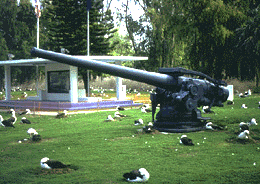
Nearly 5 million members of 17 species of seabirds nest on the islands, including 2 million albatross both Laysan and Black-footed. 80% of the world's population of Laysan albatrosses are found at Midway, more affectionately known as the "gooney bird" for their awkward landings and especially for their entertaining mating rituals. Endangered Hawaiian monk seals (7-8 feet, up to 500 lbs) haul themselves onto land to rest and to give birth and raise their young, giant green sea turtles (up to 400 lbs) are frequent visitors and have recently been documented nesting on Midways beaches, and a pod of 250-300 spinner dolphins lives – and often performs acrobatics – in and around the atoll's shallow lagoon. There is also a small but growing population of Laysan ducks, the most endangered waterfowl in the northern hemisphere.
The islands also contain memorials and artifacts of the 1942 Battle of Midway, and the original Cable buildings erected in 1903.
Do
The primary activities on Midway Atoll are nature viewing, wildlife photography, snorkeling, kayaking and touring the World War II historical sites.
Scuba diving is available only to researchers working on the island. Fishing is prohibited.
North Beach is open to humans, but other beaches are normally off limits and reserved for sea turtles and Hawaiian monk seals, both of which are endangered and protected under federal law. Midway Bowl is open Sunday from 7 to 9PM. A miniature golf course on Sand Island is being restored.
Work
US Fish & Wildlife employs about 6 staff personnel and has about 10 to 12 volunteers stay for 3- to 4-month stints throughout the year.
Chugach operates the facilities at Midway under contract with the USFWS. It is a Native American corporation based in Anchorage, Alaska. It employs about 55 persons, most are from Thailand but some are US citizens.
There are 4 airport/fireman contract workers and one PA. These positions all periodically are advertised on various websites.
Buy
Sand Island has a small "Ship Store" that carries basic items, snack type foods, and alcohol. They also rent DVDs. Nearby a small gift store run by "The Friends of Midway" sells T-shirts, postcards, books, recordings of the bird colonies, and other items.
Eat
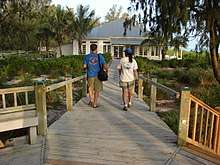
All meals are served at "The Clipper House" which serves as Midway's galley to the 60 or so residents, and the visiting tourist groups and researchers. Meals are served three times a day at the regular posted hours only. The most popular food item is the soft-serve ice cream machine. Beverages and ice are available in the hotel lobby, but there are no snack machines.
Drink
The water at Midway is safe to drink. Island residents carry and use refillable water bottles. Visitors should bring their refillable bottles: once you see the amount of plastic that washes up on the shores of the atoll you will understand why disposable plastic bottles are shunned. Alcohol is served in the local bar for 2-3 hours several nights per week.
Sleep
There are hotels on Midway. Old naval barracks have been refurbished as comfortable hotel rooms, each with a private bath. During the albatross breeding season (winter) up until the time that the chicks fledge (summer) there is the constant sound of the albatross and so earplugs are recommended.
Stay safe
There is no crime on Midway, though there is an old navy brig that can be used as a jail. Rule breakers are put on the next departing plane.
Stay healthy
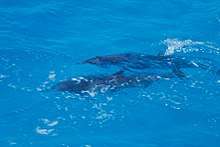
Midway is staffed with a Physician Assistant, and three of the airport workers are trained as Emergency Medical Technicians. The medical clinic includes an emergency room, ambulance, and x-ray suite.
The major concerns are sunburn, dehydration, and twisted ankles. Venturing off the posted pathways and trails can be dangerous due to the unstable, sandy terrain full of holes created by burrowing petrels.
Thr runway, Sand Island, allows medical evacuations of injured or seriously ill individuals from Midway to Honolulu. Evacuations by air are expensive and are generally not covered by regular health insurance. Visitors are advised to have travel insurance that specifically covers medical evacuations. Through a partnership with Travel Guard, Diver's Alert Network (DAN) offers such insurance. For the best coverage, purchase least 15 days in advance of your travel. DAN insures both divers and non-divers.
Go next
- Things change frequently at Midway. For up-to-date, reliable information, visit the www.fws.gov website.
- The Kure Atoll and the Pearl and Hermes Atoll lie 60 miles to the west and 90 miles to the east, respectively. These are uninhabited coral formations. Kure is part of the State of Hawaii and has a seasonal field crew of about 6 persons stationed for 5 months of the year. Pearl & Hermes has a seal research team stationed there for 6 to 8 weeks each summer and is part the Hawaiian Islands National Wildlife Refuge. Kure and Pearl & Hermes are also under the protection of the 2007-created Papahanaumokuakea Marine National Monument encompassing the islands to the northwest of Hawaii.
- The nearest inhabited islands of Hawaii lie about 1200 miles ESE.
- Wake Island, about 1,200 miles WSW, was the next stop on Pan Am's "China Clipper" service.
- The Marshall Islands are about 1,500 miles SW.
